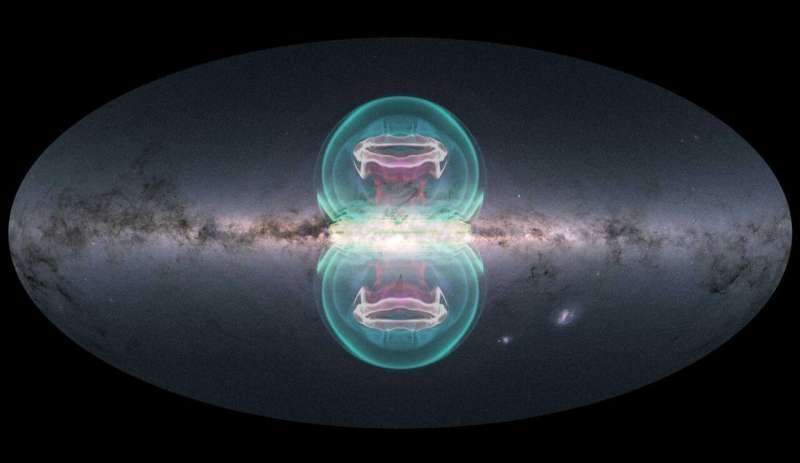Best of Last Week – Milky Way massive bubbles, cleaning solar panels, mild side effects of COVID vaccines

It was a good week for space science as a collaborative at the University of Michigan and the University of Wisconsin found evidence of massive bubbles at the center of the Milky Way caused by a supermassive black hole. Also, NASA announced that it was opening a sample taken from the moon 50 years ago. The tubes of material had been sealed to allow for later study by more advanced instruments. And a team at the Leiden Observatory in the Netherlands working with data captured by the Atacama Large Millimeter/submillimeter Array in Chile discovered the largest molecule yet in a planet-forming disk.
In technology news, a team with members from Yonsei University, Hong Kong Polytechnic University, Fudan University and Peking University developed retina-inspired sensors for more adaptive visual perception in surveillance systems, robots or other technologies. And a team at MIT developed a new cleaning method that can remove dust on solar installations in water-limited regions, improving overall efficiency while preventing unnecessary loss of water. Also, a collaboration team of researchers from Universidad Nacional Autonoma de Mexico and Brown University developed RoboKrill—a crustacean-inspired swimming robot for marine exploration. And a team at the University of Cambridge created tiny "skyscrapers" to help bacteria convert sunlight into electricity. The high-rise nano-housing grew quickly, and the researchers were able to extract waste electrons from them.
In other news, a trio of researchers with Baylor College of Medicine found that glycine and N-acetylcysteine, commonly known as the GlyNAC supplement, extended the lifespan of lab mice. Testing in their lab showed mice given the supplement lived on average 24% longer than control mice. And a small international team of researchers found that relocating farmland could turn back the clock 20 years on carbon emissions by cutting the carbon impact of global croplands by 71%.
And finally, a team at the U.S. Centers for Disease Control found that most mRNA COVID-19 vaccine side effects are mild and temporary.
© 2022 Science X Network